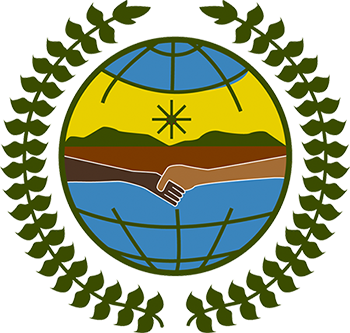Responses
b) So far 11 countries have ratified the "Convention on Intangible Cultural Heritage" and UNESCO will continue to organize various types of meetings, both in the regions and headquarters, in order to explain what the Convention is about and what may be the advantages for Member States in becoming a party to it. A series of 8 regional meetings were initiated to which all member states were asked to send representatives. An information kit was prepared for these meetings, and the Secretariat is also coordinating the development of some manuals, which will be written by experts from all regions.
Regarding the implementation process at the national level, UNESCO invites indigenous peoples to take a proactive appraoch towards greater involvement at all stages, in accordance with the requirement of State Parties to ensure the widest possible participation of communities and groups under the Convention.
(c) An international symposium on "Conserving Cultural and Biological Diversity: The Role of Sacred Natural Sites and Cultural Landscapes" will be organized in Tokyo (Japan) 30 May - 2 June 2005 by UNESCO and the United Nations University (UNU) in collaboration with the World Conservation Union, the Secretariat of the Convention on Biological Diversity, the Secretariat of the UN Permanent Forum on Indigenous Issues, and the Food and Agriculture Organization. The workshop will bring culture and nature closer together in a comprehensive approach and present case studies on sacred natural sites and associative cultural landscapes. Guidelines on the conservation and management of such sites will be elaborated for the preservation of earth's tangible and intangible heritage.
UNSECO organized workshop in February 2003 on "The Importance of Sacred Natural Sites for Biodiversity Conservation" which resulted in an International Network on Sacred Natural Sites for Biodiversity Conservation.
UNESCO also published an article by Mechtild Rossler on "Managing World Heritage Cultural Landscapes and Sacred Sites" in World Heritage Series Number 13, whch includes information on new possibilities to strengthen the protection of indigenous cultural heritage and their conxervation practices under the Convention concerning the Protection of the World Cultural and Natural Heritage. The article discusses the relevance of new criteria introduced in 1992 which allowed for an eventual change of the Operational Guidelines in 1998. The article highlights the fact that for the first time in the history of the Convention, traditional management mechanisms and customary law were considered acceptable forms of protection for a cultural site.
(d) UNESCO has faciliated participation in a number of relevant meetings, some of which include the following:
Intergovernmental Meetings of Experts on the Prelminiary Draft Convention on the Protection and Diversity of Cultural Contents and Artistic Expressions in September 2004 and February 2005;
Expert Seminar "Indigenous Education in the 21st Century" co-organized by UNESCO and the Office of the United Nations High Commissioner for Human Rights from 18 to 20 October 2004 at UNESCO headquarters in Paris.
Expert meeting on Safeguarding the Transmission of Local and Indigenous Knowledge of Nature: Linking Biological and Cultural Diversity organized by UNESCO in collaboration with the Japan Centre for Area Studies and the Secretariat of the Aichi World Exposition in Japan from 14 to 16 April 2005.
An International Symposium on "Conserving Cultural and Biological Diversity: The Role of Sacred Natural Sites and Cultural Landscapes" to be held in Tokyo from 30 May - 2 June 2005.
(e) In its report to the Fourth Session UNESCO responded by stating that the UNESCO endangered languages programme is more than a programme to record endangered (indigenous) languages. It intends to "safeguard" them. "Safeguarding" is defined as ensuring the viability of languages, including the identification, documentation, research, preservation, protection, enhancement, transmission, particularly through formal and non-formal education, as well as revitalization. The Programme is further guided by two texts prepared by the participants of the 2003 UNESCO expert meeting on endangered languages, both texts, the "Language Vitality and Endangerment Paper" and the "Recommendations for Action Plans" stress the importance of promoting the training in and use of endangered languages.
UNESCO is currently carrying out a series of pilot projects in different parts of the world with a special focus on the languages of indigenous peoples in order to explore the application of the above-mentioned texts and guidelines. All projects contain components aimed at local capacity building, the collection of oral traditions, the production of learning materials and the use of the languages in formal and non-formal education to ensure the sustainability of the project and the inter-generational transmission of the languages and the traditional knowledge. The following indigenous languages are included so far: In Niger the language of the Touareg and the ancient script called tifinagh; minority languages Lakkia and Tujia,, and in Brazil the indigenous languages Karaja, Karitiana, Kuikuru; Nigeria - Iigau and Iyinno; and Cameroon - languages of South-west Bertoua
A UNESCO Register of Best Practices of Language Preservation has recently been launched to give visibility to successful language preservation and revitalization efforts. UNESCO has invited the Forum to encourage indigenous speaker communities and NGOs to support this initiative by sharing good experiences in the preservation, revitalization and promotion of endangered languages with a wider public.
Information collected on a large number of endangered languages in all parts of the world will soon be available online starting with the map of the African continent. UNESCO invites the Permanent Forum on Indigenous Issues to comment on the existing information and to make additional information available for the users of the online Atlas.
 Welcome to the United Nations
Welcome to the United Nations
